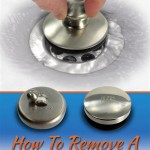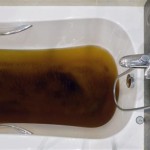Silicone Sealant for Bathtubs
Silicone sealant plays a crucial role in maintaining a watertight seal around bathtubs, preventing water damage and mold growth. Choosing the right sealant and applying it correctly is essential for long-lasting protection.
Several types of silicone sealants are available for bathroom applications. One key distinction is between acetoxy-cure and neutral-cure silicones. Acetoxy-cure silicones release acetic acid during curing, which produces a vinegar-like odor. While generally less expensive, they are not recommended for use with natural stone, marble, or certain metals as the acid can cause corrosion or discoloration. Neutral-cure silicones, on the other hand, release a less pungent odor and are safe for use with a wider range of materials. They are typically more expensive than acetoxy-cure silicones but offer greater compatibility.
Within the neutral-cure category, there are options like alkoxy-cure and oxime-cure silicones. Alkoxy-cure silicones release alcohol during curing, producing a slightly alcoholic odor, while oxime-cure silicones release almost no odor. Oxime-cure silicones are often preferred for sensitive individuals or well-ventilated areas.
When selecting a silicone sealant for a bathtub, it's essential to consider mildew resistance. Bathrooms are prone to mold and mildew growth due to high humidity. Look for sealants specifically formulated with mildewcide to inhibit growth, thereby prolonging the sealant's effectiveness and maintaining a hygienic environment.
Another critical factor is adhesion. The sealant must adhere strongly to both the bathtub material and the surrounding surfaces, typically tile or acrylic. Check the manufacturer's specifications to ensure compatibility with the specific materials in the bathroom. Some sealants are formulated for broader adhesion, working well with a variety of surfaces, including porcelain, fiberglass, and glass.
Color is another consideration. While clear silicone is a popular choice, colored sealants can be used to match the bathtub or surrounding tiles for a more seamless and aesthetically pleasing finish. White, almond, and gray are common color options.
Before applying silicone sealant, proper surface preparation is crucial for achieving a strong, long-lasting bond. Thoroughly clean the surfaces to be sealed with a suitable cleaner, removing any soap scum, mildew, or old sealant. A residue-free cleaner is essential to ensure optimal adhesion. After cleaning, ensure the surfaces are completely dry.
Masking tape can be used to create clean, straight lines and prevent the sealant from spreading onto unwanted areas. Apply the tape carefully along the edges of the area to be sealed, creating a defined space for the sealant. This also protects surrounding surfaces from accidental contact with the sealant.
Applying the sealant requires a steady hand and consistent pressure. Use a caulking gun to apply a continuous bead of sealant along the joint, ensuring full contact with both surfaces. Avoid leaving any gaps or air pockets. The bead should be slightly larger than the gap to ensure complete filling. For larger gaps, consider using backer rod to provide a base for the sealant and prevent over-consumption.
After applying the sealant, use a smoothing tool or a wet finger to create a concave surface and ensure a watertight seal. This process also helps the sealant adhere more effectively to the surfaces. Remove the masking tape immediately after smoothing while the sealant is still wet to prevent tearing or uneven edges.
Allow the sealant to cure completely according to the manufacturer's instructions. Curing times can vary depending on the type of sealant and environmental conditions. Avoid using the bathtub or exposing the sealant to water until it has fully cured.
Regular maintenance helps prolong the life of the silicone sealant. Clean the sealed areas regularly with a mild bathroom cleaner to remove soap scum and mildew. Inspect the sealant periodically for any signs of cracking, peeling, or discoloration. If any damage is observed, remove the old sealant and reapply fresh sealant to maintain a watertight seal.
Choosing the correct silicone sealant and following proper application and maintenance procedures are essential for preventing water damage and maintaining a clean, hygienic bathroom environment. The investment in a quality sealant and careful attention to detail during application will pay off in the long run by preventing costly repairs and maintaining the integrity of the bathroom.

Ge Silicone Ii 299 Ml Bathtub Sealant White

Dap Silicone Ultra 300 Ml White Sealant For Kitchen And Bathroom 73389 Rona

Ge Silicone Ii 299 Ml Bathtub Caulking Clear
Dap Silicone Max Kitchen Bath Sealant Global

Ge Silicone I 82 8 Ml Bathtub Sealant Clear Se 1121 Rona

Have A Question About Ge Tub And Tile Silicone 1 Caulk 10 Oz Kitchen Bath Sealant Clear Pg 5 The Home Depot

Ge Supreme Silicone Kitchen And Bath Tub Tile 10 1 Oz Clear Caulk 2822051 At Com

How To Caulk A Bathtub The Right Way Ge Sealants

Clear Caulk At Com
Dap Silicone Max Kitchen Bath Sealant Global
Related Posts








